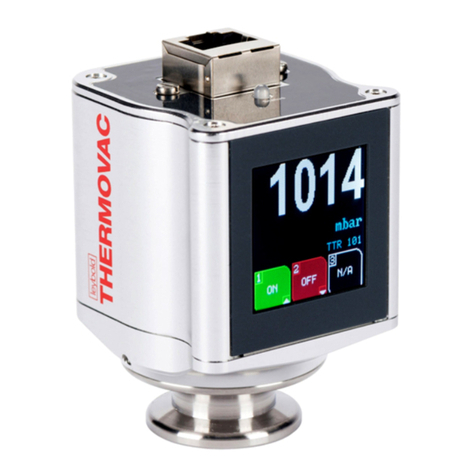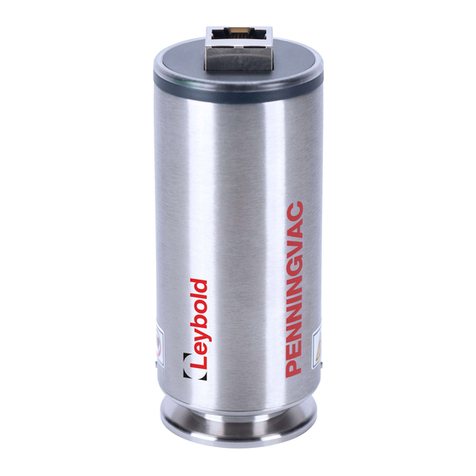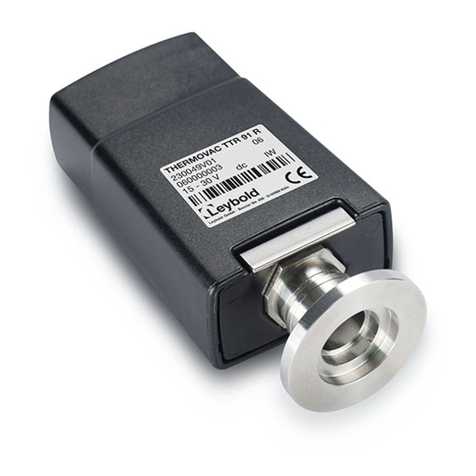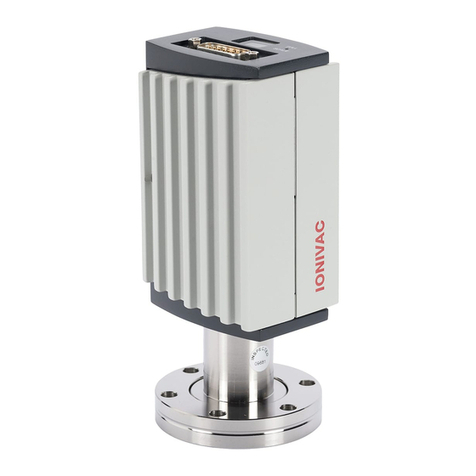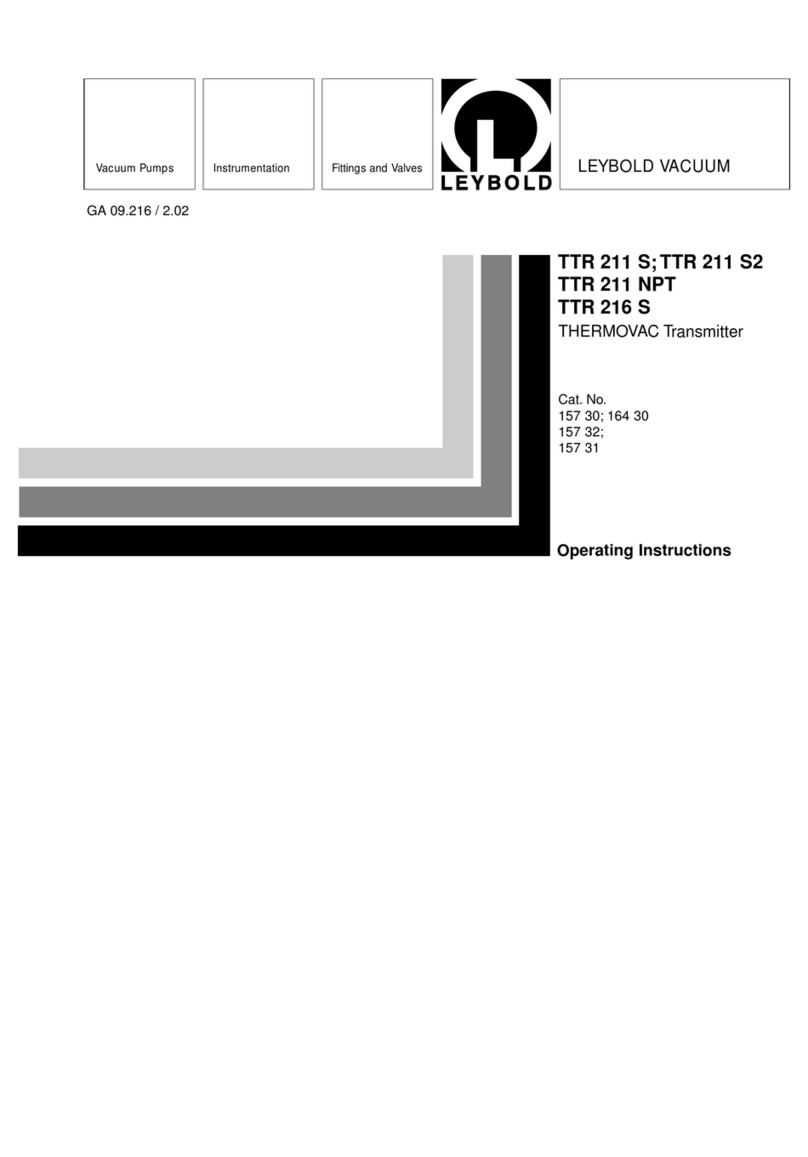
8300544660_002_C1 11/2016 - © Leybold
2.1 Technical Data
Full Scale Measuring Ranges: 1000, 100, 20, 10, 1, and 0.1 Torr
Accuracy (1) Ranges ≥ 1 Torr: 0.20% of reading.
0.1 Torr range: 0.50% of reading
Resolution(2) 0.003% of full scale
Supply Voltage: +14 to + 30 VDC; nominal 24VDC; 0.030A at 24VDC
Power consumption: < 1 Watt
Analog output: 0 –10.00 VDC
Response Time F.S Ranges ≥ 1 Torr, from 0% to 90% of F.S response
time is 40ms. For 0.1Torr F.S from 0% to 90%
response time is 80ms.
Sampling Rate For transmitters with ranges > 1 Torr (1.33 mbar), the
analog output signal is updated approximately
1000/sec. For transmitters with ranges ≤ 1 Torr (1.33
mbar), the analog output signal is updated
approximately 500 times/second
Materials exposed to vacuum: Inconel®and Incoloy®nickel alloys. KF and CF flanges
are made from 300-series stainless steel.
Internal volume: KF16 fitting 6.83 cm3
CF16 fitting 6.50 cm3
VCR8 fitting 6.05 cm3
No fitting 6.29 cm3
Housing material: ABS plastic, UL 94 V-0 rated, plated
Fitting material: Incoloy®(VCR fitting) or 300-series stainless steel (KF
and CF fittings)
Weight: KF16 fitting 550 g
CF 16 fitting 548 g
VCR8 fitting 579 g
No fitting 513 g
Operating temperature: 0° to 50° C (32° to 122° F)
Bake out temperature (Power off, fitting only): 50° C (122° F)
Humidity: 25 –95% Relative Humidity, non-condensing
Zero Temperature Coefficient: Ranges ≥ 10 Torr – 0.005% (50 ppm) full scale/°C
1 Torr –0.015% (150 ppm) full scale/°C
0.1 Torr –0.020% (200 ppm) full scale/°C
Span Temperature Coefficient: Ranges ≥ 1 Torr - 0.01% of reading/°C
0.1 Torr –0.03% of reading/°C
Burst pressure 5 times full scale or 90 psia, whichever is greater.
Overpressure Limit Without Damage 45 psia
(1) Accuracy specification includes non-linearity, hysteresis, and non-repeatability.
(2) Resolution specification is best obtainable under ideal laboratory conditions. Actual resolution in service may vary.
(3) The transmitter’s electronics are not sealed against entry of dust, rain, or snow, and therefore can be damaged by use outdoors
